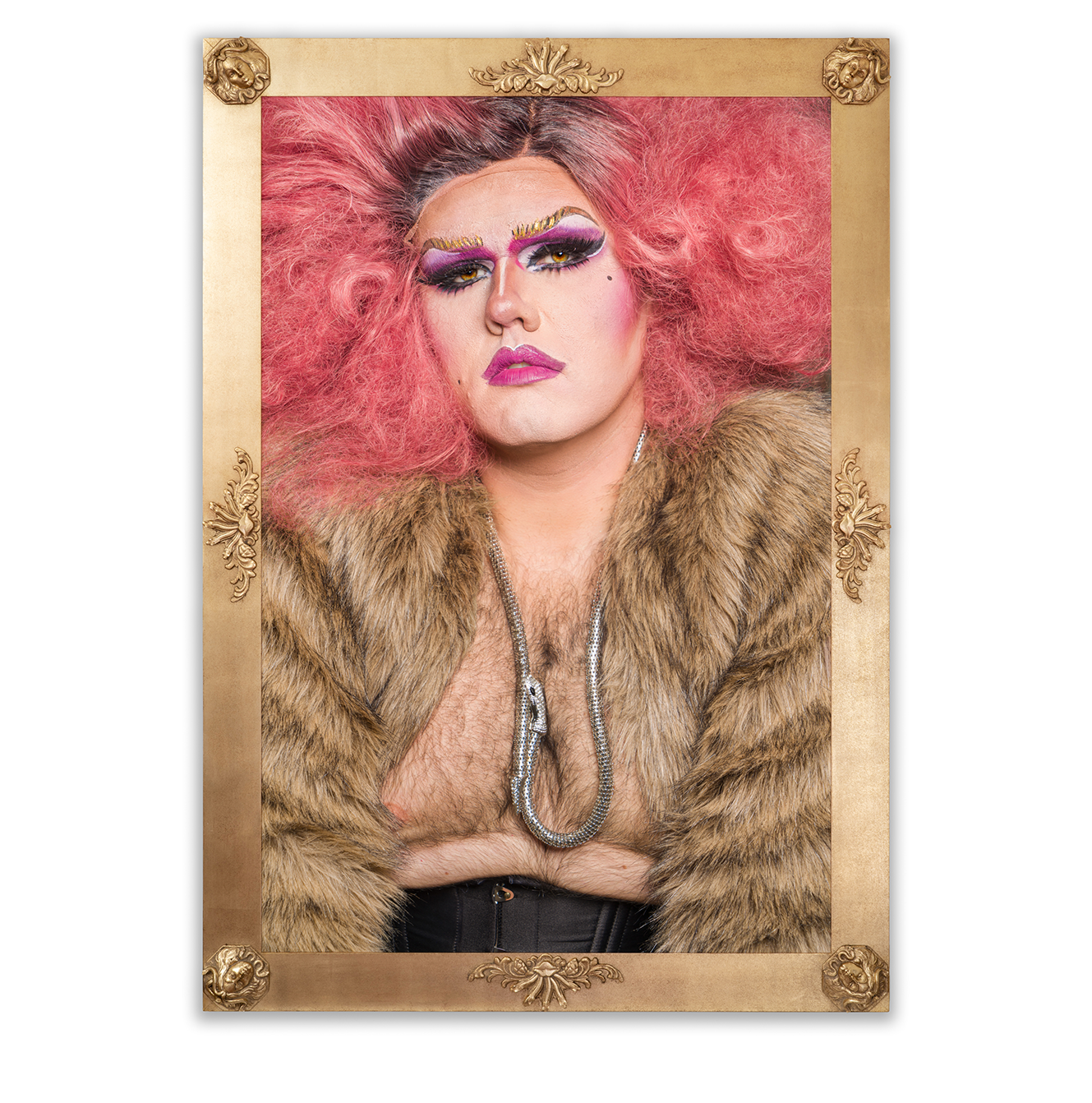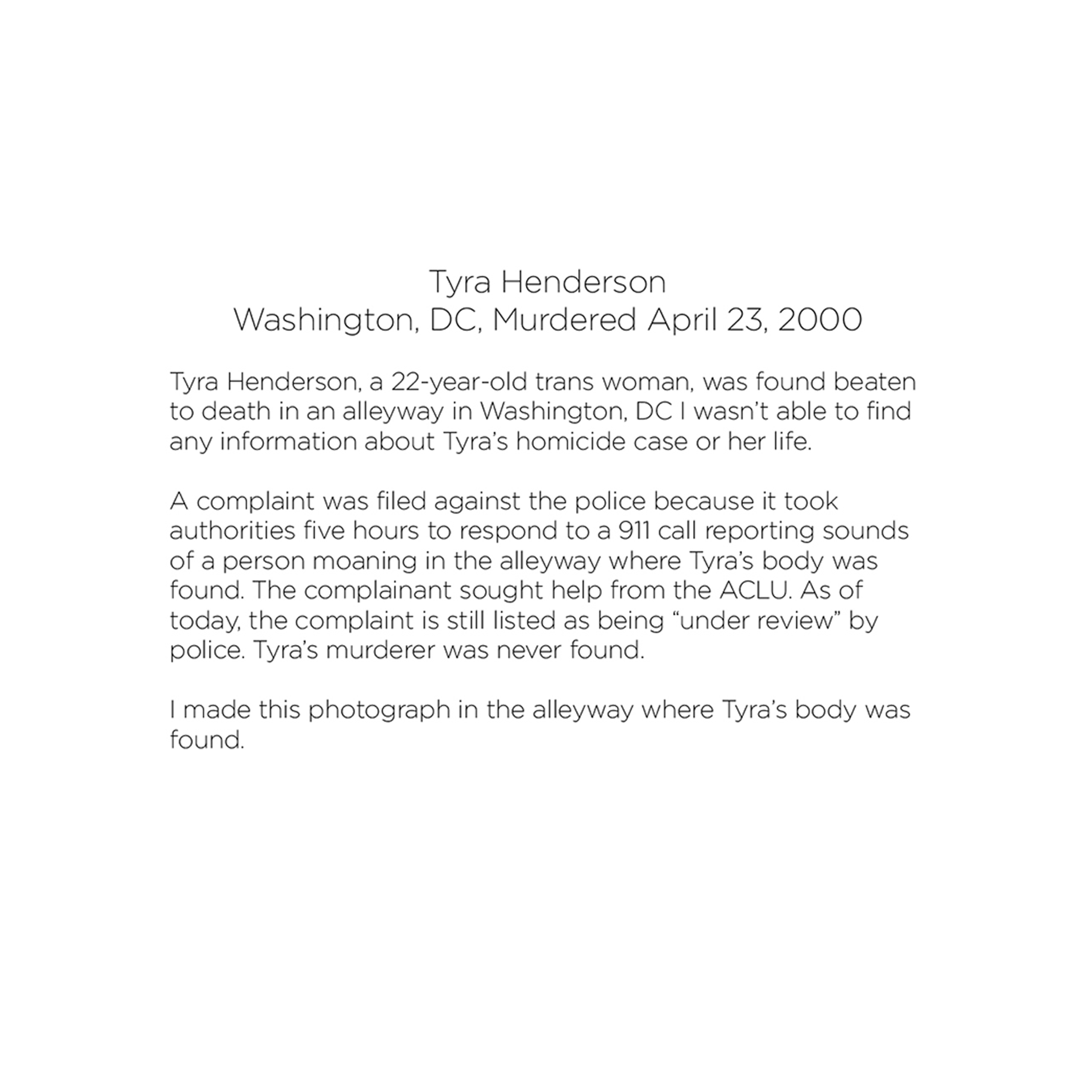Issue # 22 Sean Fader
Thirst/Trap bookends the past twenty years of LGBTQIA history, looking back to 1999-2000 as a crucial moment. This same twenty-year period saw the rise of the internet, and Fader’s project examines the role of digital photography and queer representation (or lack of it) at the beginning and end of this two-decade transformation. In 1999, President Clinton’s State of the Union address called for legislation to respond to reprehensible hate crimes being committed against queer people (this would not be made law until 2009). Since that watershed moment, there has been a continuous, if rocky, expansion of LGBTQIA presence, activism, and legal gains in the United States—until the tremendous setback of the Trump administration. The rise of the internet fueled a national conversation about LGBTQIA presence and community, and twenty years ago was also when digital photography became readily available as an everyday technology, allowing for a greater representation of individual lives and the circulation of images to communities far and wide. Sean Fader, who was twenty years old in 1999, is among those who witnessed this history first hand as a queer artist, and these two related but very different bodies of work—Best Lives and Insufficient Memory—offer very different responses to this intertwined history of LGBTQIA presence and digital photography.
Best Lives is a series of collaborative portraits focuses on the role of the digital photograph today, and it addresses the messy pleasures and conflicting impulses that characterize the queer uses of digital portrait photography in social media. In accordance with his sitters’ self-visualizations, Fader created these large-scale, heroic portraits—each with their own ornate, custom, gilded frame. Best Lives began with a custom smartphone app built by Fader that searched Instagram for images with at least one of thirty popular queer hashtags such as #instagay, #nonbinary, and #genderfluid. These images were then sorted by geotag and alerted Fader if they were within a ten-mile radius. Once notified, Fader then wrote to the poster to ask if they would be interested in meeting to talk and make a collaborative photograph.





Best Lives, 2019-2020 /Archival Inkjet Print 3D Printed Frame 60 x 40 in/152 x 102 cm.
Like Fader’s earlier investigations into the profile photograph and its consolidation of conflicting desires and aspirations, the portraits in Best Lives are the result of negotiations between Fader and his sitter. The final choice from the shoot of a representative image was always made by the sitter, who posted this image to Instagram. Fader then took this image and expanded it to heroic scale, and the bespoke frames created to look like those of painted society portraits in museum. The details of these frames—each specific to their encounter—comment on the attributes and desires expressed by the person who took this image as their own. Fader has been making these works throughout the country and has collaborated with people of different socioeconomic backgrounds, races, and gender identities. These works ask about the contradictions and possibilities of the act of individual self-representation that is nevertheless made more legible and available to others by associating it with a category (in the form of the hashtag), and in this way Fader’s collaborative portraits capture the dilemma of the profile pic and the Instagram image as both a means of expression and a sacrifice of individuality to the terms of a category. The photograph hashtagged #instagay can be concurrently self-actualizing and commodifying, and it is this condition for queer representation that Fader’s Best Lives dramatizes.
Insufficient Memory examines the moment of 1999–2000 when the Hate Crimes Prevention Act was first being debated in Congress (and not passed). Whereas Best Lives addressed our current situation of a surplus of images, Insufficient Memory attempts to remind of all the forgotten, unsung people who lost their lives as politicians debated. It was in these years that the first commercially successful digital camera, the Sony Digital Mavica, was released, and it inaugurated a future of widely available information and easily shared images. However, the expansive public archive of images it inaugurated has many gaps and omissions, many of the hate crimes against LGBTQIA would never be memorialized with a photograph (or with the mourning and activism that sharing a photograph can spark).














Inspired by the discovery of an old Sony Digital Mavica in 2019, Fader asked what was overlooked, invisible, or erased in the same moment as the digital camera began to revolutionize how queer people saw each other and their community. Reconstructing this history from local newspapers and activists’ research, he traveled to over 80 locations where hate crimes had occurred. These were often unmarked and anonymous, with these crimes forgotten. He drove 15,000 miles over months, taking a photograph at each site of a hate crime murder in 1999 and 2000. Because local news outlets were mostly uninterested in these stories and queer news outlets were not digitized, many of these stories were difficult to find. He photographed the sites with the old digital Mavica camera, creating large-scale, grainy images characterized by a literal lack of resolution and digital information (in comparison to the possibilities of digital photography today). While the tragic story of Matthew Shepherd (white, middle class, big future) was the face of the struggle to respond to hate crimes at the time, Fader delves into the stories of those of lesser means to include all who lost their lives. The celebratory tone of the works from Best Lives are sobered by the backdrop of Insufficient Memory, positing that social progress would not have been possible without queer loss and struggle—even if those stories were not well known to history until now.
Insufficient Memory is accessible online via a Google Earth Interactive Tour that will allow anyone on the internet to virtually visit all of the sites, view the photographs, and read the stories Fader unearthed and wrote about them:
Access to google earth here: https://earth.google.com/web/data=Mj8KPQo7CiExRGJJSnVvOGxRc3ktd2ROTVdTSllaWGRMbjRjX1dSS3oSFgoUMDM0ODc0NjEyNTExNzZFMjZEM0M?authuser=0
Text about Sean Fader: Thirst/Trap at Denny Dimin Gallery, New York, 2020.
https://dennydimingallery.com/exhibitions/thirst-trap/
Images courtesy of: Sean Fader / Denny Dimin Gallery.
Sean Fader is currently the Professor of Practice in Photography. Fader received his MFA from the School of the Art Institute of Chicago, his MA from the Maryland Institute College of Art in Baltimore, and his BFA from the New School in New York City. Fader is represented by Denny Dimin Gallery in New York City. His most recent solo show THIRST/TRAP was created with the support of a Skau Music and Arts Grand from Tulane University. His work has been exhibited throughout the United States and internationally in Dubai, Canada, Mexico and England. His exhibition history includes Contemporary Performance at the Florida Museum of Photographic Arts in Tampa (2019), On the Map at Denny Dimin Gallery Hong Kong (2019), 365 Profile Pics at the SPRING/BREAK Art show with Denny Dimin Gallery in NYC (2017), Picture Yourself: Selfies, Cellphones, and the Digital Age at the College of Wooster Art Museum (2016), Drama Queer: seducing social change at the Queer Arts Festival in Vancouver (2016), and White Boys, curated by Hank Willis Thomas and Natasha L. Logan at Haverford College. Fader was named a NYFA Fellow in 2013 and A Blade of Grass Fellow for 2012-2013, and he received Magenta Foundation’s Flash Forward Award for Emerging Photographers in 2012. Fader has been awarded prestigious residencies at Art Omi, Bemis Center for the Contemporary Arts, Yaddo, Stove Works, and The Wassaic Project. He has received press coverage in MOMUS, Hyperallergic, British Journal of Photography, Art F City, Humble Arts Foundation, the Huffington Post, WWD, and Slate.

